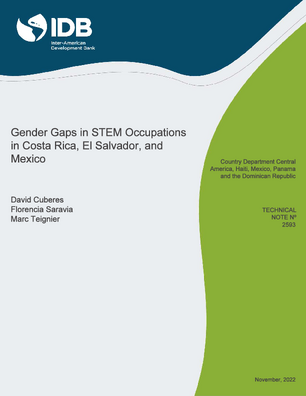Gender Gaps in STEM Occupations in Costa Rica, El Salvador and Mexico
Date issued
Nov 2022
Subject
Workforce and Employment;
STEM Education;
Women;
Children;
Gender Gap;
Social Norm;
Labor Force
JEL code
E02 - Institutions and the Macroeconomy;
J21 - Labor Force and Employment, Size, and Structure;
J24 - Human Capital • Skills • Occupational Choice • Labor Productivity;
O40 - Economic Growth and Aggregate Productivity: General
Country
Costa Rica;
El Salvador;
Mexico
Category
Technical Notes
This paper documents the existence of significant gender gaps in STEM occupations in Costa Rica, El Salvador, and Mexico and estimates the aggregate costs associated with these gaps in Mexico. For Mexico we calibrate and simulate a version of the general equilibrium occupational choice model of Hsieh et al. (2019) to estimate the output losses associated with these differences since 1992. We find that if barriers in STEM occupations were eliminated aggregate output would have been between 1% and 10% larger, depending on the year. If female-specific social norms were also eliminated, the rise in aggregate output would be between 1.4% and 14%.
For comparison purposes, we also compute the gains of eliminating all the distortions in high-skilled occupations as well as in all occupations. We find that aggregate output would rise between 16.5% and 3.6% in the first case and between 36.7% and 12% in the latter.
For comparison purposes, we also compute the gains of eliminating all the distortions in high-skilled occupations as well as in all occupations. We find that aggregate output would rise between 16.5% and 3.6% in the first case and between 36.7% and 12% in the latter.



